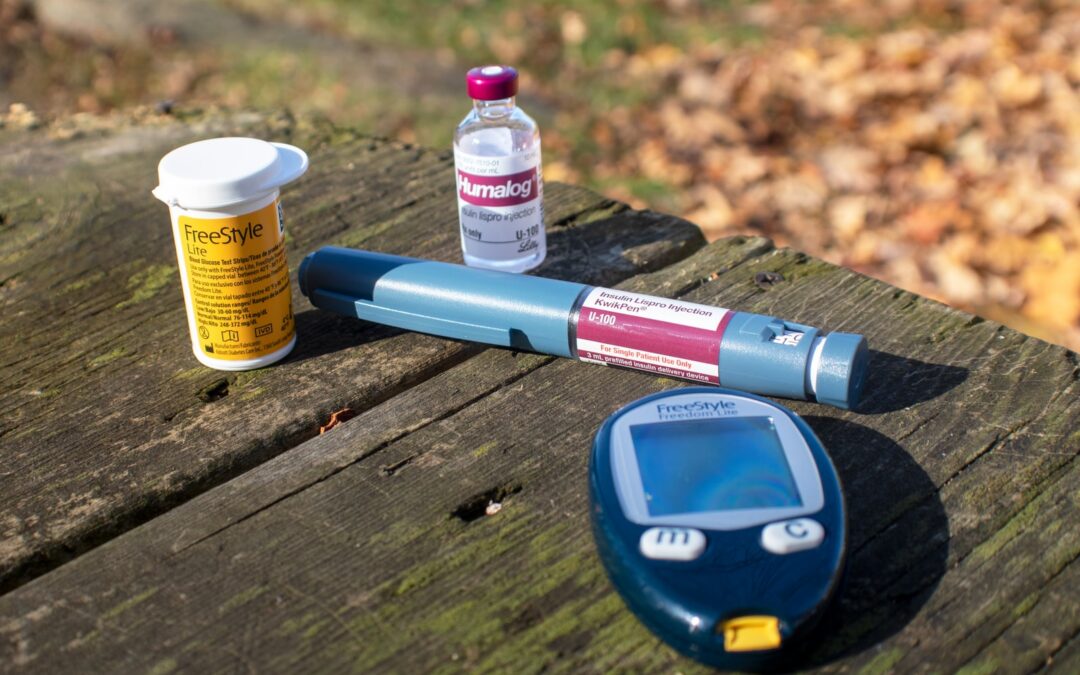The Diabetic’s Guide to Healthy Lifestyle
This article is an overview of diabetes. Diabetes is a chronic, progressive disease that affects nearly 380 million people worldwide. It can cause serious damage to the body including harm to the heart, eyes, and kidneys. Diabetes can also cause nerve damage in the extremities and lead to poor circulation. Unfortunately, diabetes cannot be cured but it can be managed by controlling blood sugar levels through diet, exercise, and medication – which is why it’s important for people to learn about how they can reduce their glucose levels.
Diabetes is characterized by high blood sugar levels, either because of too little insulin or because cells are not sensitive to insulin. Diabetes can lead to serious health problems, including heart attack, stroke, blindness, and kidney damage.
In childhood or young adulthood, type 1 diabetes usually develops, while type 2 is more common later in life or after 40 years of age. Your body doesn’t make enough insulin if you have type 2 diabetes because it uses less of the hormone than it does for energy and later use.
Type 1 diabetes is an autoimmune disorder in which the body attacks and destroys the insulin-producing cells in the pancreas.
Excess sugar in the urine causes some symptoms, such as blurred vision, heavy appetite, and feeling hungry all the time. People with diabetes who are unable to produce it naturally need to take injections for the rest of their lives.
Type 2 diabetes is a lifestyle change
Type 2 diabetes is usually a result of lifestyle choices, such as obesity, lack of exercise, genetic predisposition, and the natural aging process.
While type 1 diabetes symptoms are definitely noticeable, type 2 diabetes symptoms are less noticeable. Being overweight, a family history of diabetes, age, and ethnicity are all risk factors for type 2 diabetes. It is important for people to be aware of their risk factors for diabetes so that they can take steps to prevent it from happening.
There are a few key symptoms that can help to identify type 2 diabetes including increased thirst, increased frequency of urination, fatigue or tiredness that doesn’t go away even with rest, blurry vision, or other vision problems such as floaters or blurred vision.
People with type 2 diabetes make their own insulin, which comes from their pancreas cells. Insulin is a hormone that is produced by cells in the pancreas. The body’s cells contain blood sugar and can be used as fuel for energy. Short-acting and long-acting are the two types of insulin. Short-acting and long-acting drugs work the same way, except that the short-acting ones last 15 minutes and the long-acting one lasts for up to 24 hours. People with Type 2 Diabetes can be treated with diet and exercise if they keep their blood sugar under control.
Diabetes medications usually have few serious side effects, but may cause unpleasant symptoms like nausea, vomiting, stomach pain, diarrhea, or constipation.
The risk of developing diabetes is higher for people who have one or more risk factors such as high blood sugar levels, obesity (especially if it’s related to a lack of physical activity), or a family history of diabetes.
There are many different treatments available for type 1 diabetes. Diabetes patients with type 1 are typically treated with injections of the drug.
There is only one treatment that can stop the progression of type 1 diabetes and that is injections of the diabetes drug, insulin.
One other option for managing diabetes is an insulin pump, which allows people to control their insulin throughout the day by giving themselves small doses through a device that is connected via a tube inserted into the abdomen.

Another treatment option for type 2 diabetes is the use of oral medications to help regulate your blood sugar levels. Some medications you might be prescribed are metformin, gliclazide, rosiglitazone, or pioglitazone. You may also need to visit a doctor who specializes in endocrinology and can help decide what medication would work best for you.
There are many treatment options for Type 2 Diabetes that can be used in conjunction with one another. These include healthy eating, physical activity, weight loss, and medication. Insulin therapy is a treatment option as well and it is important to note that these treatments will not cure diabetes but they can help manage it.
The goal of diabetes treatment is to get blood sugar levels back to normal and prevent complications from developing. It’s important for people with diabetes to follow a healthy diet, exercise regularly, and take their medications as prescribed.
It is very important for an individual with diabetes type 2 to always carry an ID card or wear a medical alert bracelet that identifies them as having the condition. In the event of a medical emergency, this will ensure that proper care can be administered without delay.
The research into diabetes management is ongoing as of right now. The goal is to find more cost-effective and effective ways to treat the disease.
Diabetes treatment trends
The latest trends in diabetes management research and therapeutics are:
– New treatment for type 2 diabetes,
– Diabetes prevention,
– Better treatments for type 1 diabetes and gestational diabetes,
– More accurate diagnosis of diabetes
The world is in the throes of a diabetes epidemic. Reducing the risk of developing diabetes, reducing the effects of the disease and slowing the progression of the disease are some of the latest trends in diabetes research.
A diabetes diet plan should be high in fiber and low in fat. Breakfast may include cereals with fruit, lunch may include whole-wheat bread with peanut butter and an apple, and dinner may include pasta with tomato sauce and a salad with olive oil on the side.
Exercise routine for diabetes patients should be low-impact, such as walking or swimming.
The benefits of a healthy diet and exercise routine for people with diabetes are clear. A healthy diet helps regulate blood sugar levels, and exercise can help lower blood sugar levels.
A well-balanced diet has to include carbohydrates, proteins, fats, vitamins, and minerals. The recommended intake of carbohydrates is about 45% to 60% of calories. There should be about 10% to 20% of calories from protein, and 20% to 35% from fat.
People with diabetes have to be careful about what they eat and how much they exercise. They need to follow a diabetic diet plan, which includes eating foods that are low in carbohydrates and sugar and sticking to an exercise routine for diabetes.
There are many different methods of treating diabetes with diet and exercise, including following a diabetic diet plan, sticking to an exercise routine for diabetes, and eating foods that are low in carbohydrates and sugar. This will help you manage your blood sugar levels and prevent complications that come with not managing your diabetes.
There are many different types of foods that are recommended for people with diabetes. One type is low-glycemic index foods, which cause blood sugar levels to rise more slowly when eaten. These include whole grains, beans, lentils, and vegetables such as broccoli and cauliflower. Eating these types of food will lead to lower blood sugar levels in the long term because they don’t cause a spike in insulin-like white bread or doughnuts would.
People with diabetes also need to exercise in order to improve their insulin sensitivity, because it will allow them to maintain a healthy weight and help avoid the onset of type 2 diabetes.
The most common type of oral diabetic treatment is metformin, which helps the liver produce more insulin so that it can better regulate the amount of glucose in your bloodstream.
Diabetes medications can be used to treat the disease. Different classes of diabetes drugs work in different ways. Diabetes patients who rely on insulin for the control of their blood sugar levels can reduce it by taking it after they eat and between meals.
There are many different medications that can be prescribed to help control blood sugar levels, such as oral medication, injectable medication, and insulin therapy.
Oral medications for Type 2 diabetes are typically taken once or twice a day before meals to help maintain healthy glucose levels.
The side effects of diabetic medications vary depending on the type of medication and the person taking it. They may include nausea, vomiting, diarrhea, heartburn, headache, and dizziness.
However, there are ways to prevent these reactions from happening.
Possible side effects include dizziness, difficulty breathing, wheezing, increased thirst or urination, unusual weight loss or gain, and darkening of the skin. It is advisable to talk with your doctor before taking any medication to make sure you are aware of the risks.
The side effects of diabetic medications can be difficult to deal with, but there are ways to prevent these reactions.
Diabetic medications and side effects
The most common side effects of diabetic medications are:
-Nausea
-Vomiting
-Headaches
-Dizziness
-Loss of appetite
-Blurred vision
-Excessive thirst or urination.
Insulin comes in a number of different types that are used to treat different conditions. They are classified by their onset and duration:
The two main types are human insulin and animal insulin. Human insulin, which is made from cows or pigs, can be used by people with diabetes as well as people who have an allergy to animal products.
Insulin reactions are the body’s natural reaction to insulin injection, and they vary based on the type of insulin being used. Some people may experience an allergic reaction, but others may have no reaction at all.
Side effects of insulin therapy are common among people with diabetes and include weight gain, low blood sugar, and high blood sugar levels.
Insulin reactions and side effects of insulin therapy in people with diabetes are very important topics for anyone living with diabetes.
Symptoms of an insulin reaction may include shakiness, cold sweats, nausea, vomiting, dizziness, and confusion. This can be the result of either having too much or too little insulin in their blood according to how the body is reacting to a certain scenario.
Conclusion
To live with diabetes one must be willing to actively be aware of their blood sugar and take steps to control it. You will never be cured of diabetes, but with a plan tuned to your needs, you will live a healthy life. I hope this overview of diabetes was helpful. Please join our Facebook group and check out our other blog articles.
Read more: WebMD
*****************








